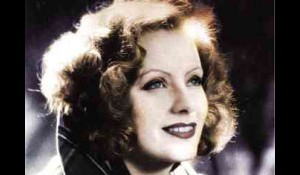MANILA, Philippines – Younger film buffs sometimes ask us about old screen icons who made a major impact in the development of movies decades ago. Right off the bat, we can say that Greta Garbo was a seminal influence in popularizing “poetic” acting, with her striking face and angular form making “stylized” portrayals on the silver screen fashionable and the way to go. Interestingly, her “hoarse” voice provided a contrast that made her even more uniquely captivating.
Her ethereal facial features were her initial claim to fame, but she was soon even more celebrated for her “artistically ardent” portrayals in “showcase” movies like “Queen Christina,” “Flesh and the Devil” and “Ninotchka.”
Despite the fact that she was the biggest star at MGM for years, Garbo valued privacy over popularity, and increasingly became reclusive, disguising herself with huge hats and dark glasses so she could get around unrecognized and thus not be fawned over. Hence, her “signature” on-screen statement was, “I want to be alone”—and she did what she could to get what she wanted!
Sadly for her many fans, that included her decision to retire when she was only 35 years old. She made only 31 movies, but many of them are prized as screen classics, with “Ninotchka” and “Queen Christina” gracing many retrospective screenings all over the world to this day. Young film buffs are “ardently” advised to view those classics, and belatedly find themselves swooning under Garbo’s artful spell—long after the fact!
Equation
On the male side of the “screen icon” equation, Marlon Brando is similarly credited for radically changing the preferred acting style in Hollywood in the 1950. Unlike the “stylized” Garbo, however, he turned the movies on their ear with his acutely naturalistic and “raw” screen portrayals.
From his first stellar appearance as Stanley Kowalski in the film version of Tennessee Williams’ “A Streetcar Named Desire,” he served notice that he was more than just another new actor—he would almost singlehandedly revolutionize the acting profession, making the elegant portrayals turned in by the likes of John Barrymore and John Gilbert a thing of the dim and dusty past!
In its place, he offered extreme realism, with emotions that screamed from the gut, often mumbled and thus almost incomprehensible—as many people spoke in real life.
In succeeding films like “Viva Zapata!,” “On the Waterfront,” “Julius Caesar” and “One-Eyed Jacks,” he built up his unique advantage, making many actors like James Dean follow suit—with alacrity.
Even as an “old” actor, Brando continued to surprise and disturb. In 1972, his naked passion in “Last Tango in Paris,” opposite the much younger Maria Schneider, made the screen sizzle despite the fact that he was in the autumn of his years. And “Apocalypse Now” and “The Godfather” similarly proved that age and rage were not antithetical to one another!
